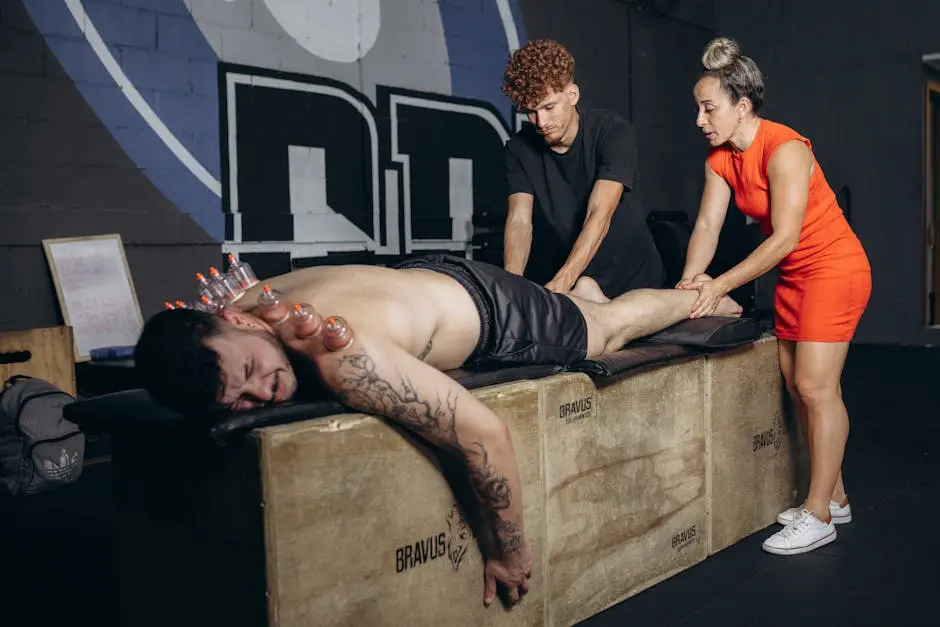Understanding the differences between manual therapy and other physiotherapy methods is essential for making informed decisions about your treatment. In this blog, we will break down what manual therapy entails, how it compares to other techniques, and why it may be the right choice for you.
Definition of Manual Therapy
Manual therapy involves hands-on techniques to alleviate pain and improve function. It includes methods like manipulation, mobilization, and soft tissue techniques.
In simple terms, it’s like getting a personalized massage that aims to relieve tension and pain in your body. Practitioners use their hands to manipulate and stretch the muscles, joints, and tissues, promoting better movement and relaxation.
What sets manual therapy apart is its direct approach. The therapist’s touch helps assess and treat various conditions, making it both an art and a science. Patients often report a strong sense of relief post-session.
Common Physiotherapy Methods
Other physiotherapy methods include exercises, electrotherapy, ultrasound, and hydrotherapy, each serving unique purposes in rehabilitation and pain management.
For example, exercise-based physiotherapy focuses on strength, balance, and flexibility. Patients perform targeted movements meant to strengthen specific areas of the body, fostering recovery through active participation.
In contrast, techniques like electrotherapy utilize machines to stimulate muscles and reduce pain. This can be beneficial for patients who may not be able to perform exercises effectively, providing an alternative means of treatment.
Ultrasound uses sound waves to promote healing in tissues, while hydrotherapy involves exercises performed in water, leveraging buoyancy to reduce strain on joints. Each method plays a vital role, depending on individual health needs.
Key Differences Between Methods
The main differences lie in the techniques used and the focus areas. Manual therapy emphasizes hands-on treatment, while other methods may rely more on equipment or exercises.
In manual therapy, the therapist is the primary instrument. The touch and expertise of the practitioner are pivotal in addressing soft tissue issues and joint restrictions. By contrast, tools used in other methods can limit the personal connection that manual therapy maintains.
Moreover, manual therapy often advocates for immediate feedback. The therapist can adjust their approach based on how the patient responds during the session, allowing for tailored treatment that evolves in real-time.
On the other hand, physiotherapy techniques like exercises may take more time to yield results, demanding a degree of patient consistency to see improvement. The distinction lies in the immediate, responsive nature of manual therapy compared to the gradual approach of other methods.
Benefits of Manual Therapy
Manual therapy can provide immediate pain relief, improve mobility, and enhance overall body function, making it an effective option for various musculoskeletal issues.
One significant advantage is the personalized attention each patient receives. Unlike some other physiotherapy methods that may focus on broader treatment protocols, manual therapy is tailored to the individual’s specific needs and responses.
Additionally, many patients find that the therapeutic touch nurtures a sense of relaxation and well-being, which can be crucial in managing chronic pain or recovery from injury. In this way, physical improvements are often accompanied by emotional relief as well.
Furthermore, studies have shown that manual therapy can be instrumental in enhancing blood circulation in the treated areas, promoting faster healing and recovery—a crucial benefit for athletes or individuals recovering from surgery.
When to Choose Manual Therapy
Consider manual therapy if you seek personalized treatment, suffer from chronic pain, or want a hands-on approach to recovery.
Patients often opt for manual therapy when conventional methods haven’t provided desired results. If you’ve tried exercise and modalities without success, it might be time to consider a more tactile approach.
Moreover, manual therapy is excellent for those who appreciate human interaction in their healing journey. If the idea of direct contact appeals to you as a means of healing, then manual therapy might just be the right fit.
Lastly, individuals experiencing stress or tension-related conditions often find relief through manual therapy’s soothing techniques. This strategy not only addresses physical issues but also helps in alleviating psychological distress, making it a holistic choice.
Final Thoughts on Manual Therapy and Physiotherapy
Choosing the right physiotherapy method depends on your individual needs and preferences. Manual therapy offers a unique approach that can complement other treatments effectively. Always consult with your healthcare professional to determine the best course of action for your specific circumstances.





